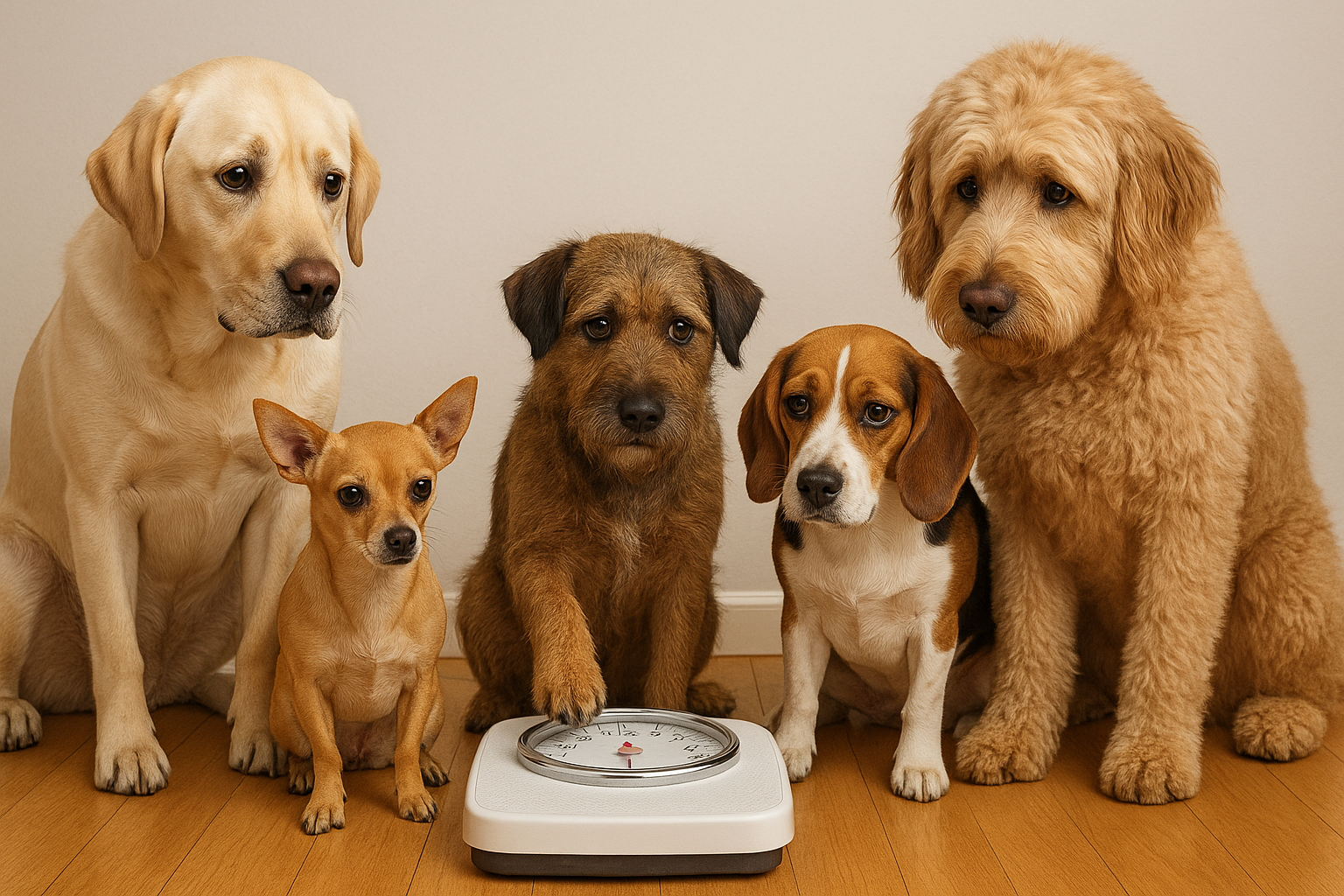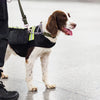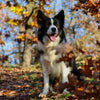Do Dogs Know When They're on a Diet?

If you’ve ever been told by your vet that your dog needs to lose a little weight, you may have felt a pang of guilt. Many owners worry that their dog will “know” if they’re being put on a diet — and those sad, pleading eyes don’t help! But here’s the truth: dogs don’t count calories, they don’t measure portion sizes, and they don’t think, “Hang on, this bowl looks lighter than yesterday’s.” What they do know is routine.

Dogs thrive on habit — being fed at the same times or in routine order each day is what matters most to them. As long as the bowl arrives when they expect it, they are usually just as satisfied, regardless of whether there’s 20 grams less kibble inside.
Why Weight Matters
Carrying extra weight isn’t just about appearance — it directly impacts your dog’s health and quality of life.
- Joints: Extra weight puts strain on hips, knees, and elbows, leading to stiffness and worsening conditions like arthritis.
- Heart health: Overweight dogs have to work harder to circulate blood, putting extra pressure on their cardiovascular system.
- Breathing: Flat-faced (brachycephalic) breeds like Pugs, Bulldogs, and ShihTzus already find breathing harder — extra fat around the chest and neck only makes it worse.
Even being a little overweight can shorten your dog’s life expectancy and reduce their ability to play, walk, and enjoy life.
The Power of Puppy-Dog Eyes
Every dog owner knows the look — big, soulful eyes, sometimes accompanied by a paw on your knee, silently begging for “just one more treat.” But giving in too often can undo all your hard work. Dogs are clever at training us, and guilt is their secret weapon!
Remember: they’re not actually hungry most of the time. They may simply be curious, bored, or responding to smells.
How Many Dogs Are Affected in the UK
- Nearly half of dogs in the UK are estimated to be overweight or obese.
- UK Pet Food’s most recent report (2024) found 50% of dogs fall into the overweight or obese category. UK Pet Food+1
- There’s often a big mismatch between owner perception and veterinary opinion. While vets estimate ~50% of dogs are overweight, many owners believe their dogs are at an ideal weight. PDSA+1
- Certain breeds have higher risk. For example:
Pugs have a significantly higher chance of being overweight.
Beagles, Golden Retrievers, and Spaniels also show increased risk in studies.

How much weight?
Weight reduction should always be a plan and not rushed, as losing weight too quickly can be harmful to your pet. This means it might take months but the end result will be worth it. Weight clinics with your veterinary team can help to keep your pet on track and help if you hit some problems along the way. Most pets who are overweight are 15% heavier than they should be – as a guide this means a 40kg overweight dog has 6kg to lose which would be lost safely over a period of 4 months.
Spotting a Healthy Weight
A simple guide is the Body Condition Score (BCS):
- Underweight: Ribs and spine visible, very tucked waist.
- Ideal: Ribs felt but not seen, visible waist, gentle tummy tuck.
- Overweight: Ribs hard to feel, little waist definition, fat pads or sagging belly.

The Dog Size-O-Meter is created and designed by the PFMA (Pet food manufacturers Association) It notes there are some cases where the natural shape of a dog may mean this simple system doesn't translate easily. For example Whippets and Greyhounds tend to have lean physiques where as Staffies will have a broader shape. Many breeds have dense or long coats which can disguise their body shape and need investigating beyond.
Treats: The Good, the Bad, and the “Maybe”
You don’t need to cut out treats completely — just make them healthier and smaller. Think of them as tokens, not meals.
 Good options
Good options
- Carrot sticks
- Cucumber slices
- Apple pieces (no seeds)
- Green beans
- Blueberries
- Small bits of lean cooked chicken
- A few pieces of their daily kibble ration
 Avoid
Avoid
- Grapes & raisins (toxic)
- Onions, garlic, and chives (toxic)
- Chocolate (toxic)
- Avocado
- Biscuits, bread, cheese, fatty meats, or sugary snacks
Tip: Chop treats into tiny pieces. Dogs don’t measure size — they’re happy with a sliver of carrot as much as a whole stick.

Exercise Counts Too
Weight management isn’t just about food. Regular, appropriate exercise keeps dogs lean and supports their joints and heart.
- For busy breeds:longer walks, off-lead play, and training games.
- For older or joint-sensitive dogs: shorter, gentler walks or swimming.
-
For all dogs: consistency is key — little and often works better than weekend marathons.
Letting Go of the Guilt
It’s natural to feel guilty about reducing your dog’s food, but remember: your dog doesn’t know they’re “on a diet.” They only know you love them, feed them, and care for them. By keeping them at a healthy weight, you’re giving them the best gift of all — a longer, happier life.
SO next time those sad eyes appear, remind yourself: love isn’t measured in biscuits. A slimmer, healthier dog will have more energy, less pain, and more years by your side.

-
Posted in
Competition dogs, Crufts, Dog Agility, dog arthritis, Dog dull coat, Dog health, Dog heart Failure, elderly/senior, Green Lipped Mussel for Dogs, Joints & Mobility, The best dog joint supplement, The Dogs Trust, The No1 dog joint care supplement, The Strongest Green Lipped Mussel Supplement, Working dogs game season










